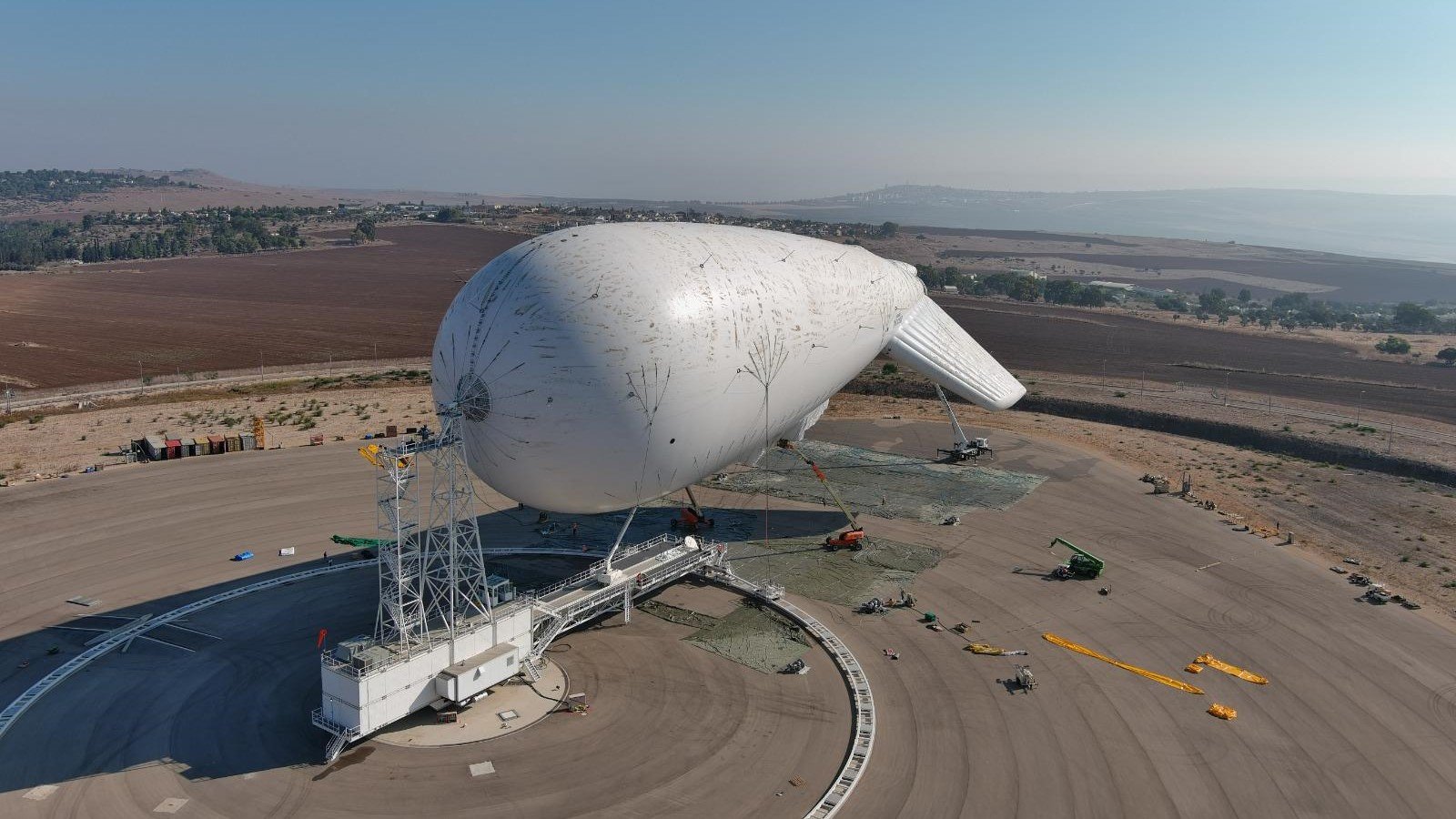
The Israeli HAAS aerostat system is inflated for the first time. (Israel Ministry of Defense)
TEL AVIV: Israel is deploying a new aerostat for the first time this week, as it moves closer to having a new missile sensor capability.
Developed jointly by Israel’s Missile Defense Organization (IMDO) and the American Missile Defense Agency (MDA), the aerostat is known formally as the High Availability Aerostat System (HAAS) and is, essentially, a blimp tethered to the ground with a long-range radar developed almost entirely from annual Foreign Military Financing funds provided to Israel from the US.
That radar has already concluded testing, and this week’s inflation of the aerostat means the program is on track to declare initial operational capability before the end of the year. The goal is to deploy the first of the HAAS systems to northern Israel in early 2022, to cope with the growing threat of Iranian-made cruise missiles and armed drones. The goal is to deploy multiple HAAS systems around the country, but the exact number is classified.
RELATED: Israel, US Step Up Direct Actions Against Iranian Drone Production
It’s not the first time Israel has experimented with aerostats, but it currently employs only one old system with a basic radar. In comparison, the new system’s radar is designed to detect threats from far distances and supply accurate information on incoming threats, sending that data along to Israel’s defensive options, such as the Iron Dome or David’s Sling systems. One source described the new radar capability as “phenomenal.”
Currently, Israel relies on a combination of radar systems, including the Green Pine radar of the Arrow air defense systems, an X-band radar deployed by the American army in Israel, and from the Israeli Air Force’s AEW aircraft.
The prime contractor on the program is ELTA, a subsidiary of Israel Aerospace Industries. The company says the HAAS is one of the world’s largest aerostats; it is developed and manufactured by TCOM, an American company specializing in aerostats.
RELATED: Saudi Arabia Considering Israeli-Made Missile Defense Systems
Aerostats sometimes have a bad rap in defense circles, particularly after the American JLENS program became a public failure. Already a struggling program, in 2015 a JLENS aerostat escaped its tethers and floated for nearly 100 miles through Maryland and Pennsylvania, dangling cords that knocked out power lines for thousands of residents before drifting into some trees; the program was ultimately cancelled two years later.
But Tom Karako, a missile defense expert with the Washington-based Center for Strategic and International Studies, says there are clear benefits to aerostats, particularly in having sensors elevated high in the sky.
“It’s high time for the policy and defense community to grow up, and quit making JLENS jokes and memes,” Karako said. “Try to fight the curvature of the earth, and you’ll lose every time.”
“The IMDO and MDA, together with the IAF and defense industries are constantly improving Israel’s threat detection capabilities,” said Moshe Patel, director of the Israeli MDO, in a statement. “This aerostat system will cruise at high altitudes and provide an exceptional, multi-directional detection capability against advanced threats.”
Added Vice Adm. Jon Hill, the head of the MDO, “The co-developed technology and research is a benefit to both nations. Additionally, this system will further enhance Israel’s advanced threat detection capabilities to maintain Israel’s qualitative military edge.”
Navy jet trainer fleet operations remain paused after engine mishap
One week after the incident, a Navy spokesperson says the service is continuing to assess the fleet’s ability to safely resume flight.


























